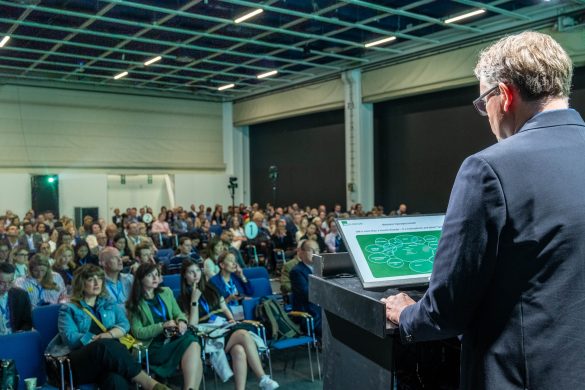by Federica Ferrari
The Rare Neurological Diseases session was a special one organised by the European Federation of Neurological Associations (EFNA) with the support of the EAN, and it covered the up-to-date unmet needs and future challenges in rare neurological diseases from the perspective of patients’ associations. EFNA is, in fact, an umbrella group representing pan-European neurology patient groups, striving to empower its members to be the most effective advocates in their own disease-specific areas. To reach this aim, EFNA works together with relevant stakeholders from the fields of policy, medical, scientific/research, and industry, as well as patient partners and other key opinion leaders.
Guest speakers at the fireside chat were Dr Astri Arnesen, President of EFNA and the European Huntington Association, Dr. Holm Graessner, coordinator of the European Reference Network for Rare Neurological Diseases (ERN-RND), and Dr Maya Ucchieddu, an active member of the Women’s Brain Project and the Italian Myasthenia Gravis Association.
The discussion started with the poignant observation that speaking about ‘rare’ neurological diseases does not mean to refer to ‘few’ people, but in fact we are speaking about 500,000 European patients affected. However, the number of expert professionals dedicated to these pathological conditions is low, and this indicates a necessity to create connections between existing specialised groups. The achievement of this strategic goal could boost the opportunity for treatment to reach every patient, and scale up the healthcare system, educating medical doctors, health providers and patients to be prepared for employing new drugs, as soon as they should be available. This is particularly relevant because several new treatments, also in terms of new drug formulations, are on the way, which could greatly improve quality of everyday life for patients.
The discussion then moved on to envisaging strategies to fight the invisibility that patients feel and often create themselves because of the sense of embarrassment of being ill. This is particularly the case for genetic diseases. Therefore, infrastructures with multidisciplinary experts are required to provide faster and proper diagnoses, but also support patients, family members and caregivers in creating a network to better cope with the disease they are facing and the challenges it prompts. On the other hand, the availability of such infrastructures could benefit from the attention of political establishments, which would greatly help to turn invisibility into visibility. Several steps forward have already been taken in this field, with specific codes having recently been assigned to rare diseases in the healthcare bureaucracy of several European countries. This has allowed cost reimbursements and a more structured and systematic data collection for these pathological conditions, also improving scientific knowledge in the field which, could become more attractive for potential young professional experts. As pointed out by Dr Graessner, interest arises from knowledge.
Another point of discussion has been the gender differences when a woman is affected by a rare neurological disease. In fact, women are misdiagnosed more often than males and the overall disease burden seems to be higher when women become ill, in terms of economic costs and familial inter-relationships, but also because they tend to be less straightforward and demanding with respect to their disease-linked necessities, with higher risk of suffering isolation and consequent mental health issues.
Finally, the drawbacks of the recent COVID-19 pandemic for patients affected by rare neurological diseases was discussed. Of course, the limited accessibility to hospitals had a detrimental impact on patients’ care. On the other hand, it led to the implementation of novel technologies and spread telemedicine. For rare diseases, these new ways to connect are a fundamental add-on in their management, allowing networking over geographical distances and practical hurdles with other patients and caregivers, but also with clinicians, who would be difficult to contact otherwise and expensive to reach, given the paucity of highly specialised professionals in the field.













